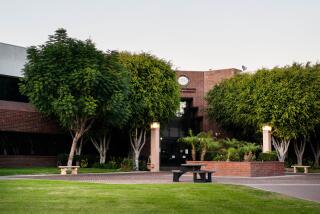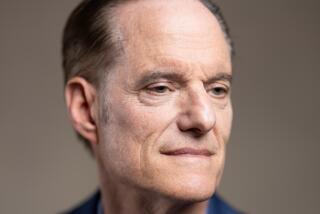3rd-Largest Foundation Has $3.58 Billion in Assets : Kellogg Makes a Mark With Gifts
- Share via
BATTLE CREEK, Mich. — The marketing skills of Will Keith Kellogg put cold cereal on the world’s breakfast tables, but the “king of corn flakes” worked as hard at giving away his fortune as making it.
In the 58 years since the late Kellogg Co. founder established the W. K. Kellogg Foundation, it has dished out more than $1 billion on programs to overcome the problems of hunger, disease and ignorance--both at home and abroad.
“There’s nothing glamorous or sexy about a grant to a land grant college to extend knowledge to farmers in a poor, rural setting,” Kellogg Foundation board member Dorothy Johnson said.
“The Kellogg Foundation is not out tooting its horn to toot its own horn,” said Johnson, who joined Kellogg’s board six years ago.
The foundation’s $3.58 billion in assets is exceeded only by the Ford Foundation and the J. Paul Getty Trust. Kellogg gave out $89 million in the year ending Aug. 31 and plans to donate more than $110 million this fiscal year.
Despite its size, the Kellogg Foundation keeps a remarkably low profile.
“A number of the major foundations seem better than they are, and they devote considerable effort to maintaining that appearance,” Waldemar Nielsen wrote in his book “The Golden Donors.”
“Kellogg is the reverse case: It is substantially better than it is generally seen to be,” Nielsen said in the book.
The relative obscurity of the nation’s third-largest foundation, those familiar with it say, has its origins in the mission set by its creator--applying existing knowledge to the problems of people.
Still, the foundation is leaving a lasting mark around the world as it strives to bridge the gap between what is known and what is practiced.
Among its major accomplishments:
Training thousands of Latin American nurses, doctors, dentists and hospital administrators, first through a fellowship program created during World War II to bring health professionals to this country and later through aid in creating and building medical and nursing schools in the region.
Nurturing the development of community colleges in the United States and helping them grow into one of the nation’s leading sources of post-high school education.
Fostering the growth of agricultural extension services at land grant universities around the country so farmers could benefit from the results of agricultural research.
But more than anything else, the Kellogg Foundation has focused its attention on improving the lives of children.
A Difficult Life
“Mr. Kellogg was very, very much interested in youth,” said Jack Mawdsley, former superintendent of the Battle Creek Public Schools and now a programming director for the foundation.
Kellogg’s interest in improving the lives of children grew out of his own experience, according to Nielsen. The founder had poor relations with his son, John L. Kellogg, who quit the company his father hoped to turn over to him, and with his grandson, John L. Kellogg Jr., who did the same.
Both son and grandson predeceased him, as did two wives. Kellogg also endured numerous health problems, including glaucoma-induced blindness, though he lived to 91. He died in 1951.
Kellogg’s charitable interests may have been influenced by “the many tragedies in his life . . . and his deep personal sense of loneliness,” Nielsen wrote.
What makes the Kellogg Foundation stand out from its peers, observers say, has been its clear statement of goals and systematic pursuit of ways to fulfill them.
“Compared to the egocentricity, ulterior purposes, lack of a genuine sense of direction and general organizational ineptitude of more than a few donors, Will Kellogg was a giant: compassionate, broad-minded, clearheaded and with great practical wisdom,” Nielsen said.
For most of its first decade, the foundation concentrated its efforts in a seven-county area near Battle Creek, home of the foundation and cereal company.
More to Read
Sign up for Essential California
The most important California stories and recommendations in your inbox every morning.
You may occasionally receive promotional content from the Los Angeles Times.










